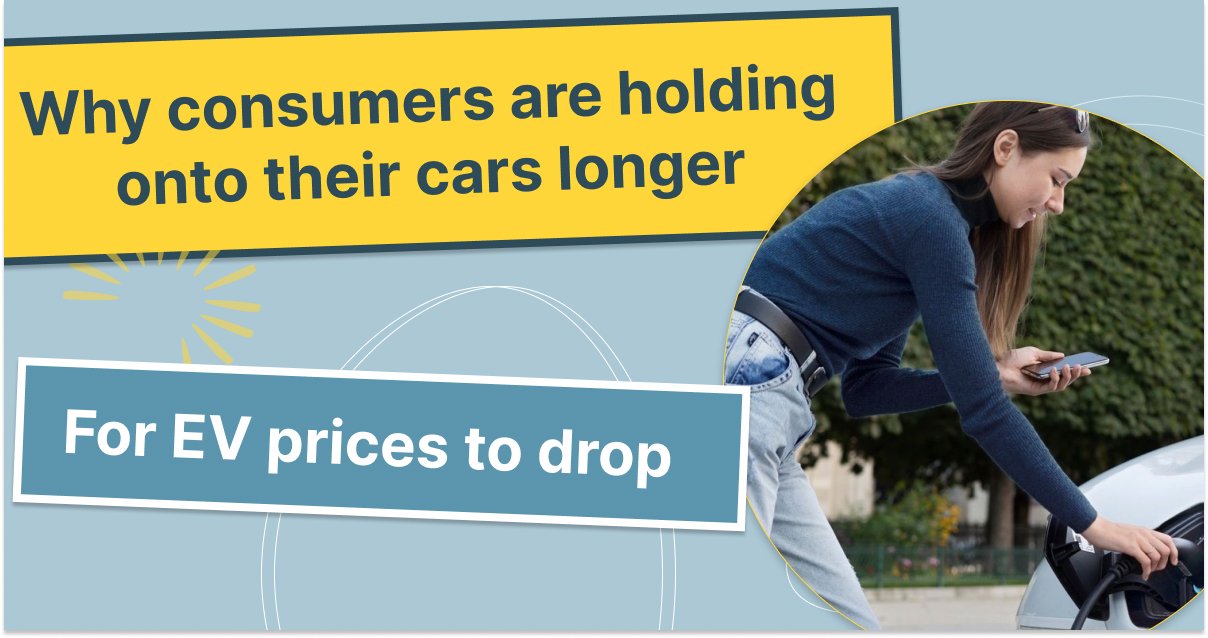Why Consumers are Holding onto Their Cars Longer for EV Prices to Drop
Created on 4/10/2023

The electric vehicle (EV) revolution is well underway, but many consumers are still clinging to their trusty gas-guzzlers. While there's a growing appetite for EVs, the prices of these eco-friendly alternatives can be a barrier to entry for some. This has led to a trend of car owners holding onto their current vehicles longer, patiently waiting for the day when EV prices drop to more affordable levels. Let's dive into the reasons behind this trend and how it could impact the future of the automotive industry.
While you’re waiting for that price drop on the new Tesla truck, make sure you’re covered on repair expenses with CarmaCare
The Rising Cost of New Vehicles:
Over the past few years, the average price of new vehicles has steadily increased, making it harder for consumers to justify upgrading their current rides.
This trend isn't limited to EVs – even traditional internal combustion engine (ICE) vehicles have seen price hikes. As a result, many car owners are opting to keep their existing vehicles in good shape and delay purchasing a new one.
The Promise of Affordable EVs:
While it's true that the prices of EVs have come down since they first hit the market, they are still relatively expensive compared to their ICE counterparts. However, there is hope on the horizon. Automakers, spurred by government incentives and growing consumer demand, are investing heavily in EV technology. This is expected to lead to more affordable models in the coming years. Many consumers, aware of this potential, are willing to hold off on purchasing a new car until they can get their hands on a reasonably priced EV.
Maintenance Costs vs. Long-term Savings:
The prospect of lower long-term costs is another reason why consumers are willing to wait for EV prices to drop. While maintaining an older vehicle can be more expensive due to increased repair costs, potential buyers are balancing these expenses against the anticipated savings they could enjoy with an EV. With lower fuel costs and fewer moving parts, EVs generally have lower ongoing maintenance expenses than ICE vehicles, making them a financially attractive option in the long run.
Environmental Considerations:
As climate change becomes an ever-present concern, more consumers are prioritizing the environmental impact of their purchasing decisions. By waiting for EV prices to drop, these consumers hope to contribute to a greener future by reducing their carbon footprint. This mindset is driving people to extend the life of their current cars and hold out for an affordable EV option.
Conclusion:
The trend of consumers holding onto their cars longer in anticipation of more affordable EVs highlights the growing interest in sustainable transportation. As EV technology continues to advance and prices become more competitive, it's likely that we'll see a shift in consumer behavior, with more people trading in their older vehicles for electric alternatives. This trend not only reflects the changing priorities of car buyers but also underscores the need for automakers to innovate and deliver cost-effective, eco-friendly options that cater to a wider audience. As we move toward a greener future, the automotive industry must continue to adapt and evolve to meet the demands of environmentally conscious consumers.
